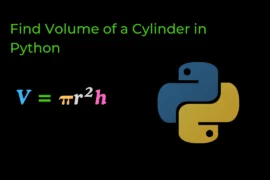In this post we learn how to print fibonacci sequence but before writing program we should know what is fibonacci number?
What is fibonacci numbers?
First two number is fixed that is 0,1 and sum of previous two number will give next number and those number sequence is known as fubonacci numbers.

We should write this program in two different ways
- Using function
- Using Recursive function
1. Fibonacci numbers Using function
Write a python program to print fibonacci numbers using function.
before writing this program we should know :
so let’s write a program for fibonacci numbers and see the output.
Source code:
# 0 1 1 2 3 5 8 13 ...
# a b c
# a b c
# a b c
def fibonacci(num):
a = 0
b = 1
if num == 1:
print(a, end=" ")
elif num == 2:
print(a,b)
else:
print(a, end=" ")
print(b, end=" ")
i = 0
while i < num-2:
c = a + b
a=b
b=c
print(c, end = " ")
i+=1
# return c
n = int(input("enter number for series :"))
fibonacci(n)Output-1:
enter number for series :10
0 1 1 2 3 5 8 13 21 34Output-2:
enter number for series :20
0 1 1 2 3 5 8 13 21 34 55 89 144 233 377 610 987 1597 2584 4181 Explanation
NOTE: all the bold letter or words are function or variable name.
variable a = 0 and b = 1 are fixed then in c variable sum of next number is stored that is (c = a+b).
after that update a value of a and b —–> (a = b and b = c)
2.Fibonacci numbers Using Recursive function
Write a program to print fibonacci numbers using recursive function.
before writing this you should know:
- about function
- about recursive function
- while loop
- if-elif
Source code:
def fibo(n):
a = 0
b = 1
if n == 0:
return a
elif n == 1:
return b
else:
return fibo(n-1) + fibo(n-2)
n = int(input('ENter a number: '))
l = [str(fibo(i)) for i in range(0,n)]
# print(l)
print(','.join(l))Output-1:
ENter a number: 11
0,1,1,2,3,5,8,13,21,34,55,89Output-2:
ENter a number: 15
0,1,1,2,3,5,8,13,21,34,55,89,144,233,377Hope this post add sum value to your life -thankyou.






